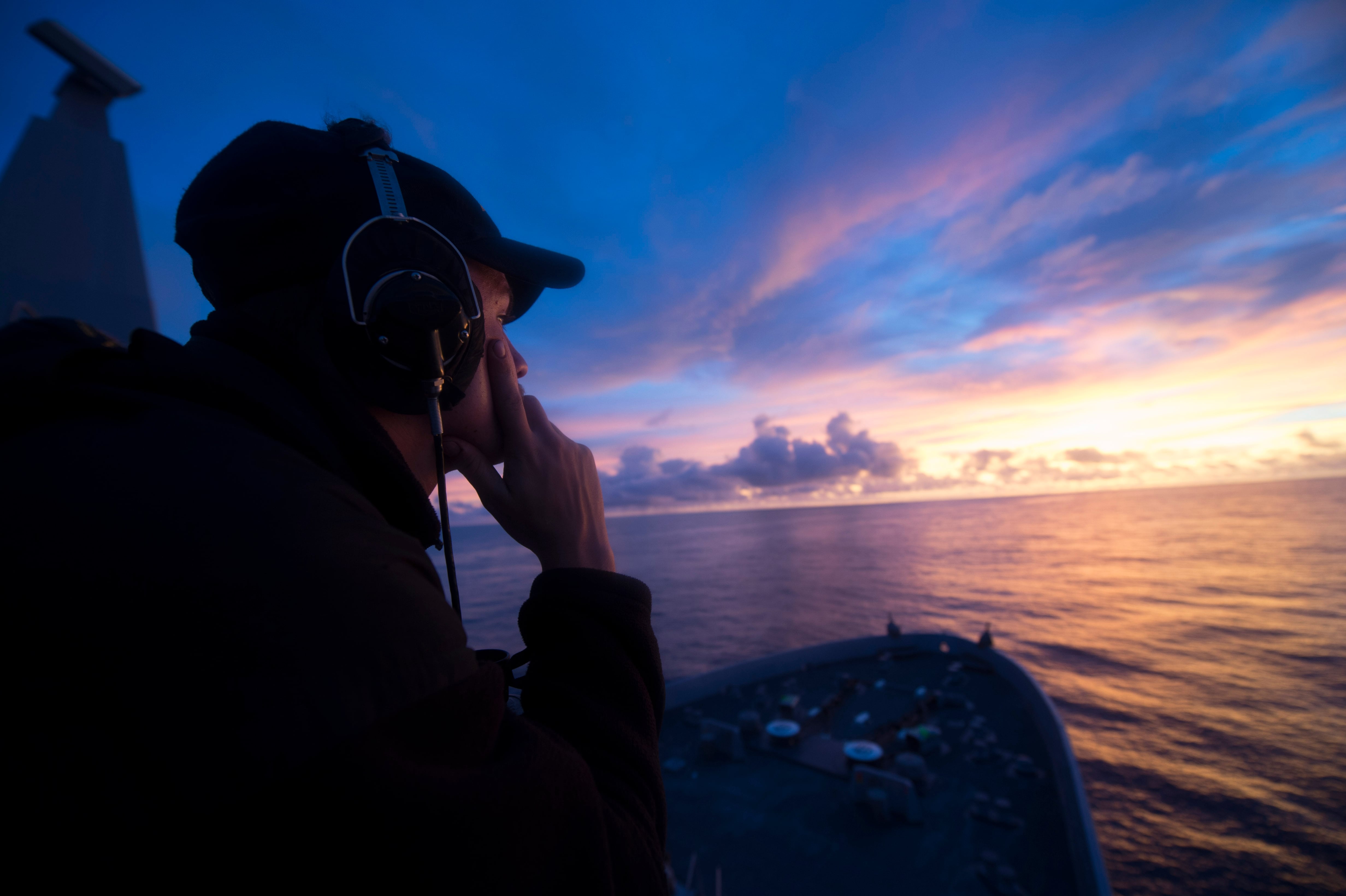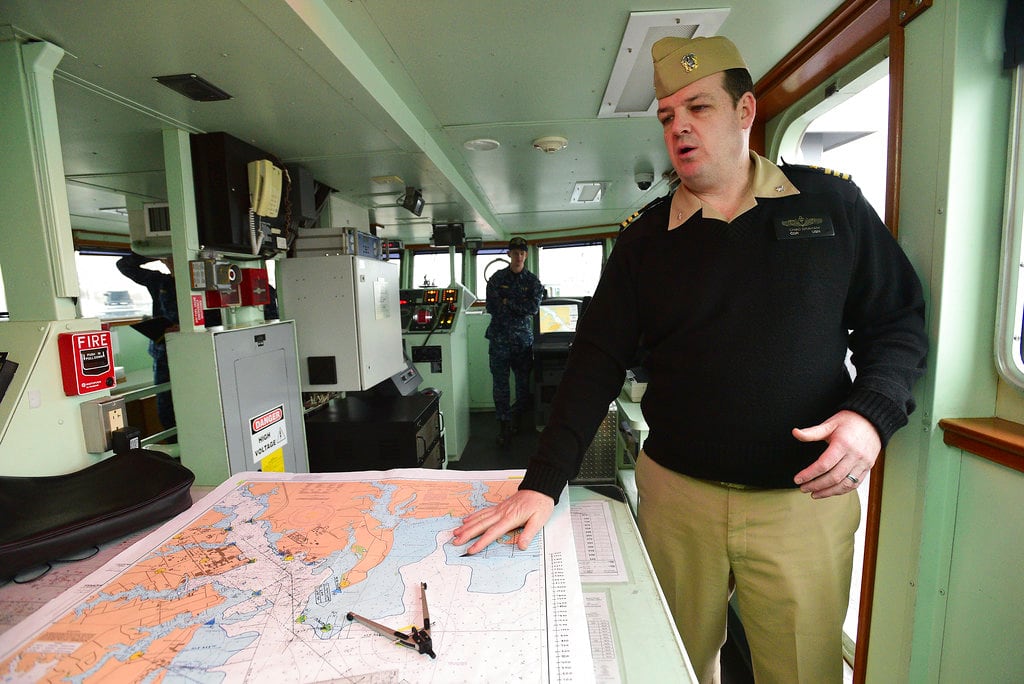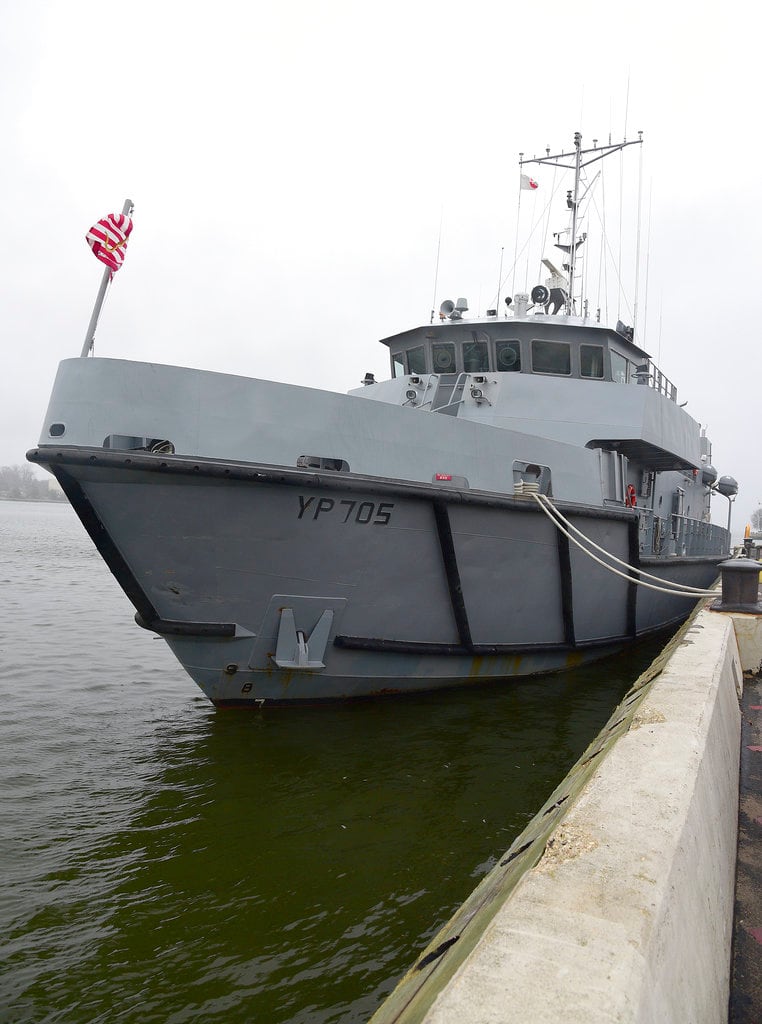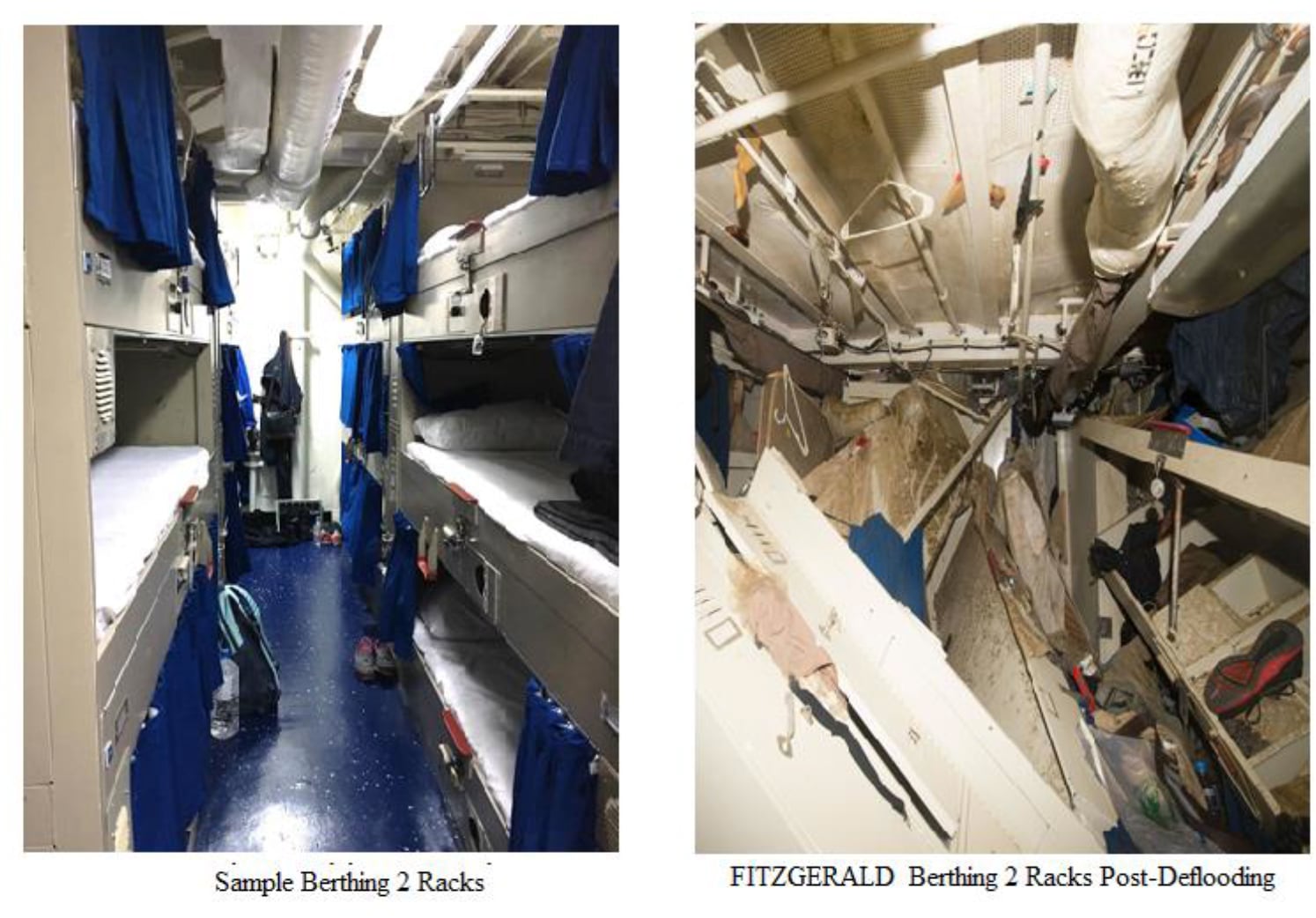ANNAPOLIS, Md. — In October, the Navy published a review of “Recent Surface Force Incidents,” highlighting avoidable collisions involving the USS Fitzgerald and the USS John S. McCain that led to the deaths of 17 sailors.
The review found that proficiency in seamanship and navigation competes for the time and attention with other duties — and gaps exist in how those skills are provided and tested.
Seamanship and navigation are the core of what officers will do when they go to sea, according to the Naval Academy’s seamanship and navigation chair Cmdr. Chad Graham. And while the time midshipmen spend in seamanship and navigation courses has gone down since his days at the academy as other priorities like cyberwarfare have emerged, the 1998 graduate said the courses he is responsible for are what makes the Naval Academy naval.
RELATED

Fundamentals of seamanship, basic navigation, advanced navigation and junior practicum courses are all part of the school’s core curriculum.
Graham is teaching two courses this semester, one for plebes and one for seniors. For the seniors, it’s less academic rigor and more advice from an experienced sailor to a novice, he said.
“These are the things I’ve done to be successful. This is my advice to you on your first day aboard,” he said.
He also reinforces the importance of being a capable mariner.
“I reteach them the rules of the road again to make sure they’re going out fresh,” he said.

Every word matters — the understanding between the meaning of “may” and “shall” is huge, he said.
“To teach them where that happens in the rules, and making sure they understand where they have to do something, and where it’s just best practice to do something,” he said.
Graham can teach students concepts like relative motion inside one of the school’s bridge simulators, and also practice contact management — how to deal with other vessels on the water.
“We don’t have signal lights out here and we don’t have traffic lanes,” he said.
The faux bridge is surrounded by a panoramic screen, and the horizon line moves with the simulated vessel. It’s not unheard of for people to get seasick. A quick call to a nearby control room, and Graham can change the location, weather, waves and type of vessel being simulated. The simulator was recently upgraded, he said, part of a constant process to have the best training possible.
“The more realistic I can make it in here, the better off I am,” he said.

But the academy has another tool that offers a level of realism a simulator can’t match — its Yard Patrol crafts. The ships, moored at Naval Support Activity Annapolis, have been used at the academy for decades to support what midshipmen learn in the classroom about how to operate a vessel at sea.
The review of the collisions called for an evaluation of how Yard Patrol craft are used across officer accession programs like at the academy. Officials said the evaluation should also look at the feasibility of expanding Yard Patrol craft use and other training programs to ensure every naval officer gets the core competencies laid out in the Officer Professional Core Competencies Manual.
RELATED

As Graham gave a tour of one of the vessels last week, midshipmen were checking charts and courses, and gathering for a navigation briefing in an on-board classroom and lounge.
Three boats, each with 30 midshipmen and a crew, were scheduled to travel to Philadelphia the first weekend in March, and the midshipmen were gathered to practice ahead of that cruise.
They’ll practice basic navigation and ship-handling requirements, work on maneuvering ships in a column and test out crew rotations to ensure each watch team is proficient.
The academy conducts three weekend cruises a semester to ports like Baltimore, Philadelphia and Norfolk, Virginia, with two to four crafts each.
“They’re going to find out where they’re not good, work through some of those faults as a team and see where they need to do a little more work before they sail over the horizon,” Graham said.
Having a plan that everyone knows is key — that way if they go off course everyone can work through the problem.
“If everyone has a piece of the plan, they can back each other up,” he said.
Graham’s first trip on a Yard Patrol craft was also his first time sleeping on a ship, first time driving a vessel and first time taking a vessel into port.
The academy is in the midst of repairing and extending the life of six Yard Patrol crafts, which will expand the program’s capacity. That was already in the works — any changes to operations that may result from the Pacific collisions haven’t been communicated yet.




